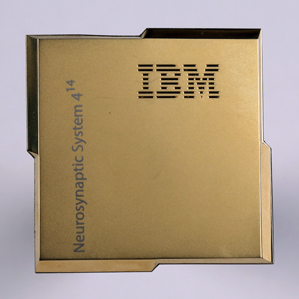 Is it possible that we can someday build a computer that’s as powerful and as efficient as a brain?
Is it possible that we can someday build a computer that’s as powerful and as efficient as a brain?
Researchers at IBM recently unveiled a prototype of their human brain-inspired SyNapse chip. The new postage stamp-sized chip processes information using a network of just over one million “neurons” that communicate with one another using electrical spikes — as actual neurons do.
The chip uses the same basic components as today’s commercial chips, silicon transistors, but its transistors are configured to mimic the behavior of both neurons and the connections – synapses – between them.